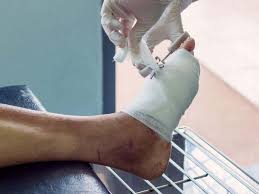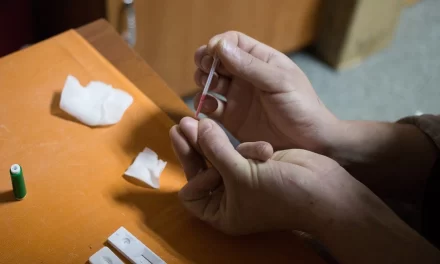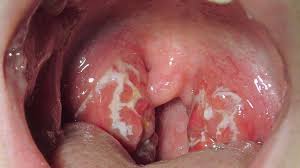San Antonio, TX – A groundbreaking study has identified key risk factors contributing to diabetic foot reinfections, shedding light on an alarming health issue affecting millions of people with diabetes. Texas has one of the highest diabetes rates in the country, with more than 2.7 million residents diagnosed. In San Antonio alone, approximately one in six people have type 2 diabetes, and one-third are prediabetic, according to the American Diabetes Association.
Type 2 diabetes, a chronic condition that impairs insulin production and usage, can lead to severe health complications, including foot ulcers. Alarmingly, nearly 50% of these ulcers become infected, often resulting in hospitalization and, in some cases, amputations of the foot or lower limb.
A study published in November 2024 in the International Wound Journal by researchers at The University of Texas Health Science Center at San Antonio (UT Health San Antonio) is the first to identify risk factors for reinfection following diabetic foot infection treatment. The research found that almost half of patients treated for these infections experience reinfection, underscoring the need for targeted medical interventions to improve patient outcomes.
The Study and Its Findings
Leading the study was Dr. Lawrence A. Lavery, a specialist in diabetic foot complications and professor of orthopaedics at UT Health San Antonio. Dr. Lavery, who recently returned to the university after 30 years, aims to address the significant burden of diabetes-related foot complications in San Antonio and South Texas.
The research team analyzed eight years of patient data from 294 individuals hospitalized with moderate to severe diabetic foot infections. The patients, ranging in age from 18 to 89, had a median age of 53, with 75% being men. Researchers tracked reinfection rates in soft tissue and bone over a 12-month period following initial treatment.
The study’s most critical finding was that patients with wounds taking longer than three months to heal were three times more likely to experience reinfection. Additionally, individuals with bone infections faced more than double the risk of reinfection compared to those with only soft tissue infections. Conversely, patients whose wounds completely healed had significantly lower reinfection risks.
The Impact of Unhealed Wounds
Chronic wounds act as entry points for bacteria, creating a cycle of infection that can lead to severe complications. “When a wound hasn’t healed, that is the doorway for bacteria to get in and cause a second infection,” Dr. Lavery explained.
Beyond reinfection, patients with unhealed wounds were more likely to face extended healing times, multiple hospital readmissions, and prolonged hospital stays. This pattern of reinfection and hospitalization significantly increases the risk of amputation, re-amputation, and even premature death.
Diabetic foot complications also take a substantial emotional and financial toll on patients and their families. Dr. Lavery noted that diabetic men have twice the amputation rate of women, and many are working-age individuals with children to support. This creates a difficult choice: staying home to heal properly or returning to work and risking reinfection and long-term disability.
Rising Diabetes Cases Among Younger Adults
The study also highlighted a disturbing trend—diabetic complications, including severe foot infections, are becoming more common among younger adults. Dr. Lavery attributed this to the increasing prevalence of obesity, high blood pressure, and other metabolic conditions at younger ages.
“It’s not just about chronological age but physiological age,” Dr. Lavery said. “We are seeing more 30-year-olds hospitalized with foot infections. Neuropathy typically develops after a decade of diabetes, but since people are developing diabetes earlier, more are facing these severe complications much younger.”
Preventative Measures and Future Research
To combat the growing problem of diabetic foot infections, UT Health San Antonio has launched a comprehensive prevention program featuring specialized clinics throughout the city. Dr. Lavery emphasized the need for a multidisciplinary approach to diabetic foot care, including education, early intervention, and innovative monitoring technologies.
“This is a call to action,” he stated. “We need to be more aggressive in treating complex wounds to prevent infection, develop better monitoring strategies, and proactively utilize new medical technologies. This research presents a vital opportunity to apply evidence-based medicine in clinical practice and improve outcomes for patients and their families.”
Conclusion
The findings of this study highlight the urgent need for improved wound care management and targeted preventive strategies to reduce reinfection risks among diabetic patients. As diabetes continues to affect younger populations at higher rates, health professionals must implement proactive measures to mitigate complications and improve overall quality of life for those affected.
Disclaimer: This article is for informational purposes only and should not be considered medical advice. Individuals concerned about diabetes or foot-related complications should consult with a qualified healthcare provider.












